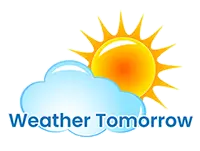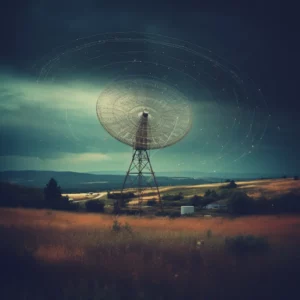Weather radar is a crucial tool in meteorology that helps us understand and predict the behavior of atmospheric conditions. It plays a vital role in providing real-time information about precipitation patterns, storm development, and other weather phenomena. In this article, we will delve into the fascinating world of weather radar technology and explore how it works to enhance our understanding of the weather.
Weather radar is a specialized technology that enables meteorologists to monitor and track various atmospheric conditions. It provides valuable information that aids in forecasting weather patterns and predicting severe weather events, such as thunderstorms, hurricanes, and tornadoes.
The Basics of Radar
Radar stands for “Radio Detection and Ranging.” It operates by emitting radio waves and then analyzing the signals that bounce back after hitting an object. In the case of weather radar, these objects are raindrops, snowflakes, or other particles present in the atmosphere.
Weather Radar Components
A typical weather radar system consists of several key components:
- Transmitter: Emits radio waves.
- Antenna: Sends and receives signals.
- Receiver: Captures and amplifies the returned signals.
- Signal Processor: Analyzes the data to determine precipitation intensity, movement, and type.
- Display Unit: Presents the processed data in a comprehensible form for meteorologists.
Emitting Radar Signals
The radar transmitter emits short bursts of radio waves, often referred to as radar pulses. These pulses travel through the atmosphere and encounter various particles in the air. When they collide with precipitation particles, they are scattered in various directions.
Signal Reflection and Return
The scattered radio waves, also known as radar echoes, return to the radar antenna. The time it takes for the signals to return provides information about the distance of the precipitation particles from the radar system. The intensity of the returned signals indicates the density and size of the particles.
Doppler Effect in Weather Radar
The Doppler effect comes into play as the radar detects the motion of precipitation particles. This effect causes a frequency shift in the returned signals based on the relative motion between the radar and the particles. Meteorologists use this information to determine wind speed and direction within storms.
Data Interpretation and Visualization
The radar system processes the collected data and creates a visual representation on meteorologists’ screens. This representation, often displayed as colorful maps, shows the intensity of precipitation and its movement. It helps meteorologists make informed decisions about weather forecasts and potential severe weather events.
Applications of Weather Radar
Weather radar has a wide range of applications, including:
- Early detection of severe weather events
- Monitoring rainfall for flood forecasting
- Tracking the movement of storms and hurricanes
- Studying the behavior of tornadoes and thunderstorms
Advancements in Weather Radar Technology
Recent technological advancements have improved the accuracy and capabilities of weather radar systems. Dual-polarization radar, for example, can distinguish between different types of precipitation, enhancing forecast accuracy. Additionally, phased-array radar allows for quicker scanning and more frequent updates.
Limitations and Challenges
While weather radar is a powerful tool, it does have limitations. Radar beams can be blocked by mountains, tall buildings, or other obstacles. Additionally, radar can struggle to accurately measure snowfall and certain types of precipitation. Meteorologists continue to refine radar technology to overcome these challenges.
Weather radar plays an integral role in modern meteorology by providing invaluable insights into atmospheric conditions. Its ability to track and monitor precipitation, storm movements, and severe weather events has revolutionized our understanding of the weather and our ability to prepare for its impact.
FAQs
- What is the primary function of weather radar? Weather radar is primarily used to monitor and track various atmospheric conditions, especially precipitation patterns and severe weather events.
- How does Doppler radar work in weather forecasting? Doppler radar measures the motion of precipitation particles using the Doppler effect, helping meteorologists determine wind speed and direction within storms.
- What are some applications of weather radar technology? Weather radar is used for early detection of severe weather events, flood forecasting, tracking storm movement, and studying tornadoes and thunderstorms.
- What are the limitations of weather radar? Weather radar can be obstructed by obstacles like mountains and tall buildings, and it may struggle with accurately measuring certain types of precipitation.
- How have recent advancements improved weather radar technology? Advancements such as dual-polarization radar and phased-array radar have enhanced the accuracy, capabilities, and speed of weather radar systems.










